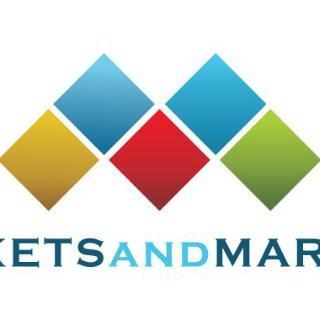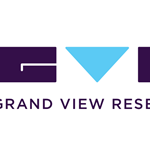In 2024, the U.S. tools plastic market size was valued at USD 617.65 million, and it is anticipated to register a CAGR of 5.8 % from 2025 to 2034. (Polaris) This strong domestic base must be understood in a global regional context, as North America, Europe, and Asia Pacific each evolve distinct trajectories in tools plastic demand. In North America, the U.S. leads in adoption of high-performance plastic formulations for power tools and hand tools, leveraging proximity to material suppliers and engineering capacity. Europe is similarly technology-driven but more constrained by environmental regulation, while Asia Pacific offers the largest volume upside given its massive scale of manufacturing, construction, and consumer markets. Regional manufacturing trends, cross-border supply chains, and market penetration strategies play out differently in each region, and geopolitical, regulatory, and trade influences must be carefully calibrated by players seeking to serve or contest these geographies.
In North America, cross-border supply chains with Mexico and Canada deliver resin feedstocks, molded components, and subassemblies. Many tool OEMs source plastic housings or grips from North American injection-molding hubs for faster lead times and lower logistics risk. U.S. regulatory pressures around chemical safety (e.g., TSCA, state restrictions on restricted substances) mean that plastics in tools must often satisfy higher compliance thresholds domestically than those in some export markets. In Europe, the circular economy agenda and single-use plastic avoidance policies impose greater scrutiny on plastic tool parts, pressuring manufacturers to adopt recyclable or bio-resin systems. The European Green Deal and REACH regulation affect polymer selection, additives, and whether materials can penetrate EU tool markets. In Asia Pacific, manufacturers leverage economies of scale in China, India, and Southeast Asia to produce lower-cost tools or plastic components, then export into the U.S. and Europe, or serve local markets. Trade tariffs, anti-dumping measures, and exchange rate volatility influence penetration strategies—some OEMs establish local molding or finishing plants to mitigate tariff risk or to align with regional content rules.
Drivers in the regionally focused narrative differ by zone. In North America, a mature repair/DIY culture and high demand in construction and industrial tool segments support steady growth. Innovations in lightweight, ergonomic tooling drive demand for advanced polymers (e.g. fiberglass-reinforced nylon, polycarbonate blends). In Europe, the push toward sustainable materials and regulatory mandates around recyclability drive preference for next-gen plastics. In Asia, rising infrastructure investment, urbanization, and consumer demand for quality tools fuel volume growth. The synergy of regional manufacturing trends allows players to optimize cost vs. performance tradeoffs: low-cost molding in Asia, finishing or high‐value assembly in North America or Europe.
Restraints also vary by region. In North America, the incremental cost premium of advanced plastics vs. metals or commodity plastics can hamstring adoption in cost-sensitive segments. The U.S. has high labor, energy, and compliance costs, which raise capital barriers. In Europe, regulatory fragmentation (differing national plastics and chemical policies) slows cross-market deployment. Asia faces variable quality control, fluctuating input cost (monomers, additives), and risks of trade sanctions or export controls. Globally, volatility in petroleum-based resin feedstocks and supply chain constraints (e.g. shipping delays, semiconductor shortages for tooling machines) remain significant restraints.
Opportunities in each region present distinct levers. In North America, players can localize high-performance polymer compounding and finishing to reduce import reliance, enabling faster prototyping and responsiveness. In Europe, firms that pioneer recyclable or bio-derived tool plastics may win regulatory favor and premium branding. In Asia, expanding downstream finishing, coating, or assembly operations can capture more value in regional supply chains. Cross-region strategies include dual footprint manufacturing (e.g. molding in Asia, final assembly in U.S.), licensing of material formulations to regional partners, and formation of regional supply alliances that minimize cross-border friction.
Read More @ https://www.polarismarketresearch.com/industry-analysis/us-tools-plastic-market
Trends across these regions show a fragmentation of global supply chains into regional clusters. Many tool OEMs and plastic component producers are nearshoring or establishing regional “molding hubs” to reduce lead times, logistics costs, and tariff exposure. In North America, there is increased investment in automation and Industry 4.0 molding lines to offset higher labor costs. Europe leads in adoption of circular design and recycled plastic blends, pushing toward value chain optimization around material recovery. Asia is witnessing rapid growth of assembly and finishing nodes near major tool OEMs, enabling more integrated local supply. Another trend is regional standard harmonization efforts: Asia and Europe are gradually aligning standards for tool plastic materials to enable cross-region compatibility, influencing penetration strategies. Digital design, simulation, and additive prototyping tools help accelerate development cycles across regions, reducing time to market.
The competitive landscape in the U.S. and global tools plastic arena is concentrated among a few firms with scale, global reach, and material development capacity. Among them are:
• DuPont
• BASF
• Eastman Chemical
• Covestro
• SABIC
• LG Chem
• LyondellBasell
These players hold critical influence on resin formulation, stabilization, additive systems, and regional supply networks. In deploying regional manufacturing footprints, they often segment tooling partnerships, licensing, and joint ventures to pursue cross-border market penetration strategies calibrated to North America, Europe, and Asia. The regionally focused narrative underscores that capturing value in U.S. tools plastic over the 5.8 % CAGR horizon requires a nuanced regional deployment of manufacturing, regulation alignment, and supply chain resilience — not a one-size-fits-all approach.
More Trending Latest Reports By Polaris Market Research:
Commercial Kitchen Appliances Market
Cannabis Pharmaceuticals Market
Bipolar Disorder Treatment Market
Cannabis Pharmaceuticals Market
North America and Europe Open RAN Market





